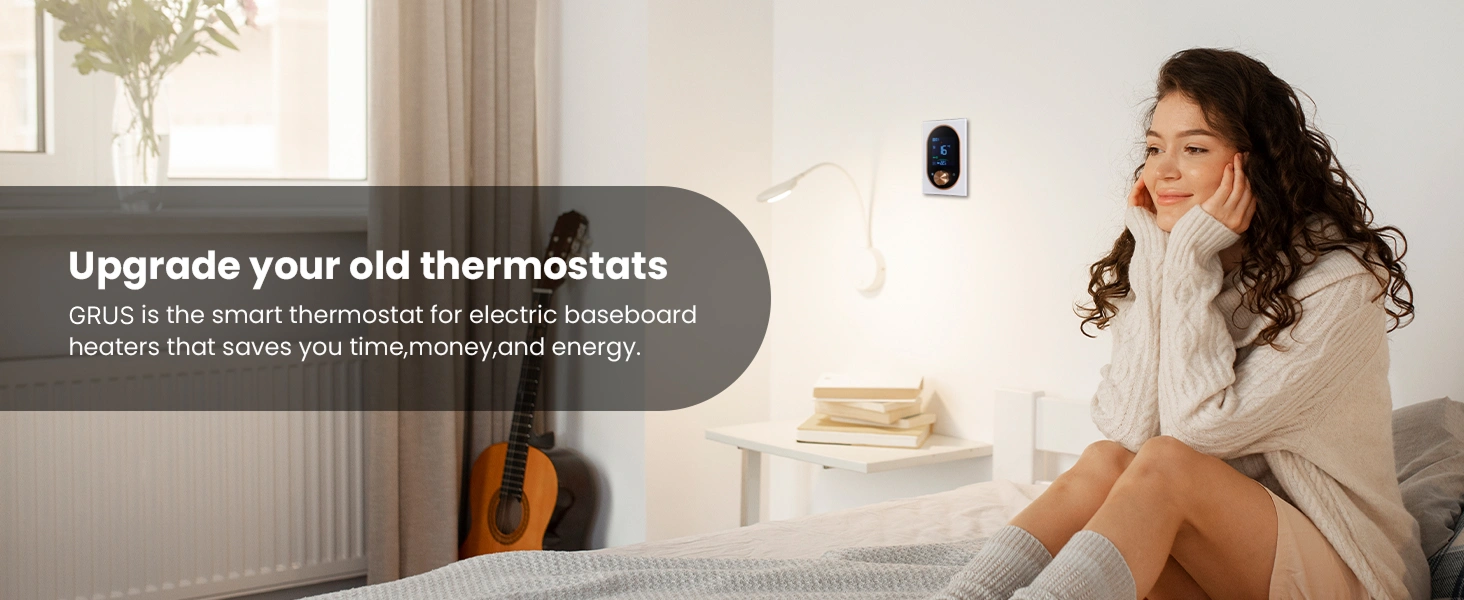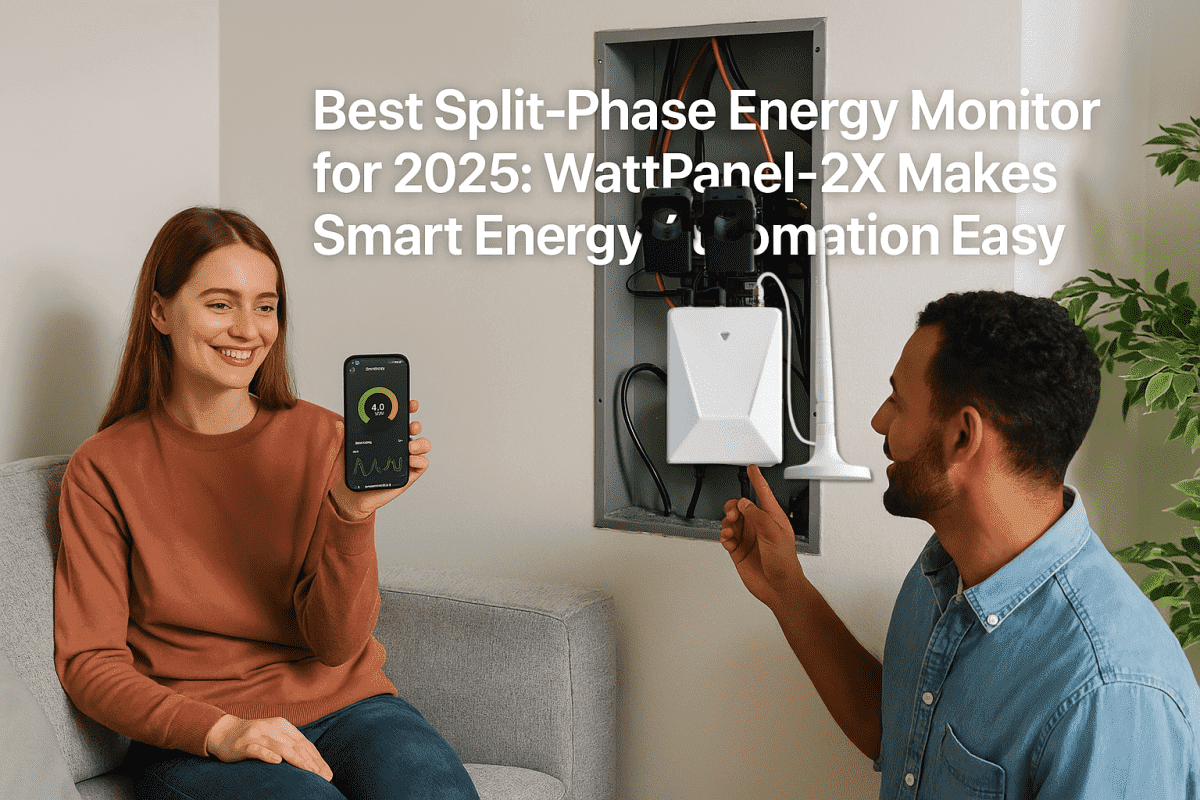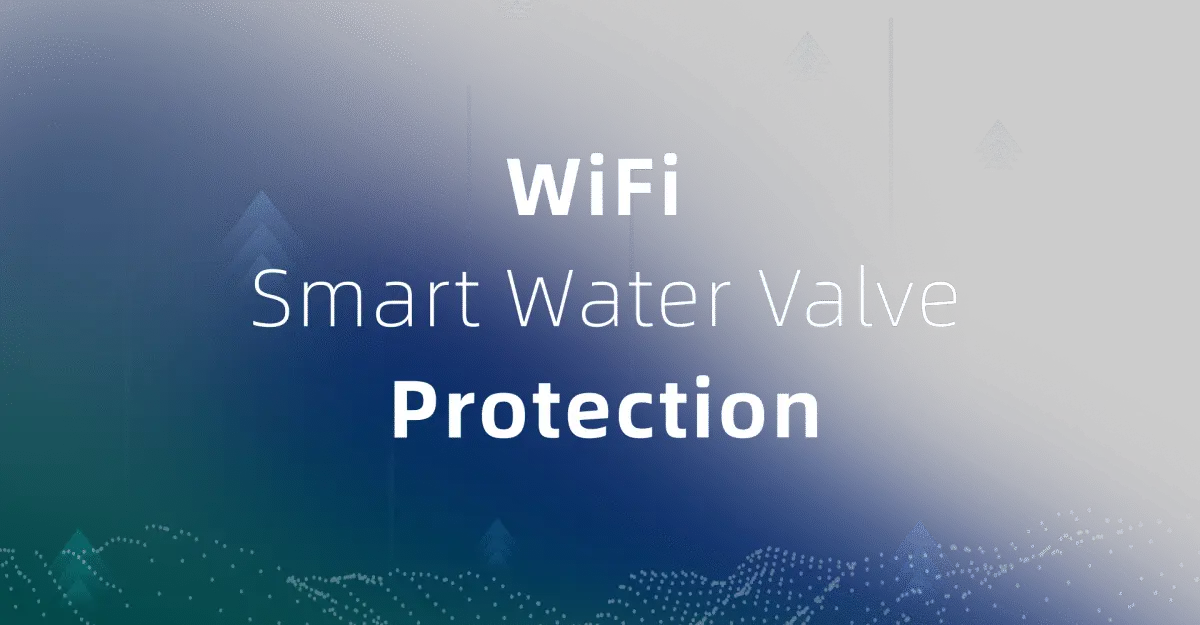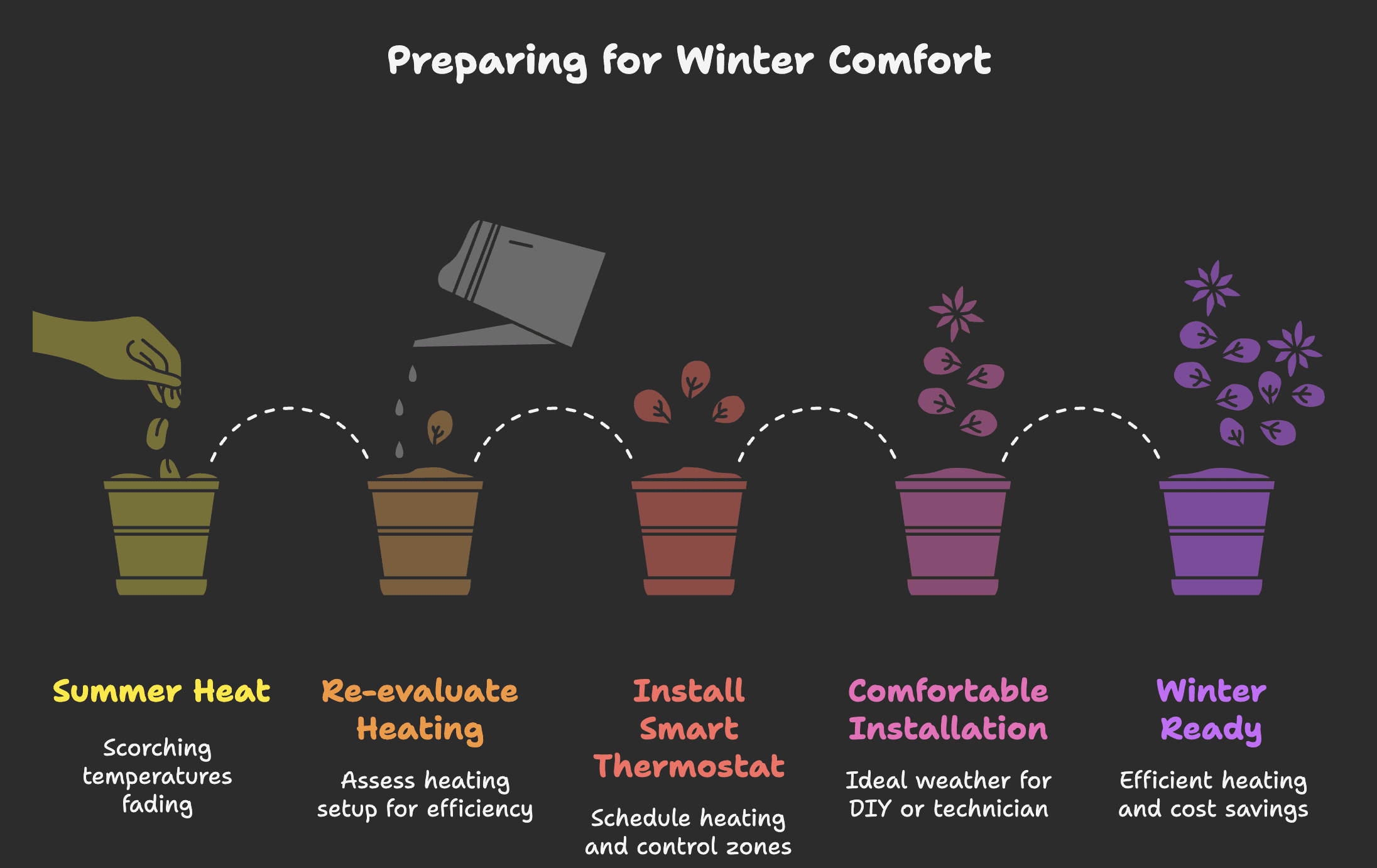
Quando si tratta di scegliere tra un termostato programmabile e uno intelligente,many homeowners with baseboard heaters wonder if the upgrade is really worth it. If you already use a programmable model, you’re ahead of most — but as energy costs rise, a smart thermostat could take you the rest of the way.
You’ve taken that first step toward saving energy — but as utility bills keep climbing, you might be wondering:Passare a un termostato intelligente farebbe davvero la differenza?
It’s a fair question. Programmable thermostats have been around for decades, and they work just fine. But modern smart thermostats promise more comfort, more control, and better savings. Are they truly worth upgrading for? Let’s look at how both types work, how much they really save, and which one fits your home best.
1. Perché molti proprietari di casa non hanno più bisogno dei loro termostati programmabili
Programmable thermostats were designed to help homeowners save by scheduling heat around daily routines. You set a weekly schedule — warm in the morning, lower while you’re at work, cozy again by evening. In theory, it’s perfect.
In reality, life isn’t that predictable anymore. Between hybrid work, weekend plans, or kids’ activities, few families actually stick to fixed schedules. And that’s where things fall apart.
“I had a basic Honeywell for years,” one user wrote. “It worked fine — until my routine started changing. Then I was constantly reprogramming it or forgetting to change the schedule. My ‘automatic’ system became completely manual.”
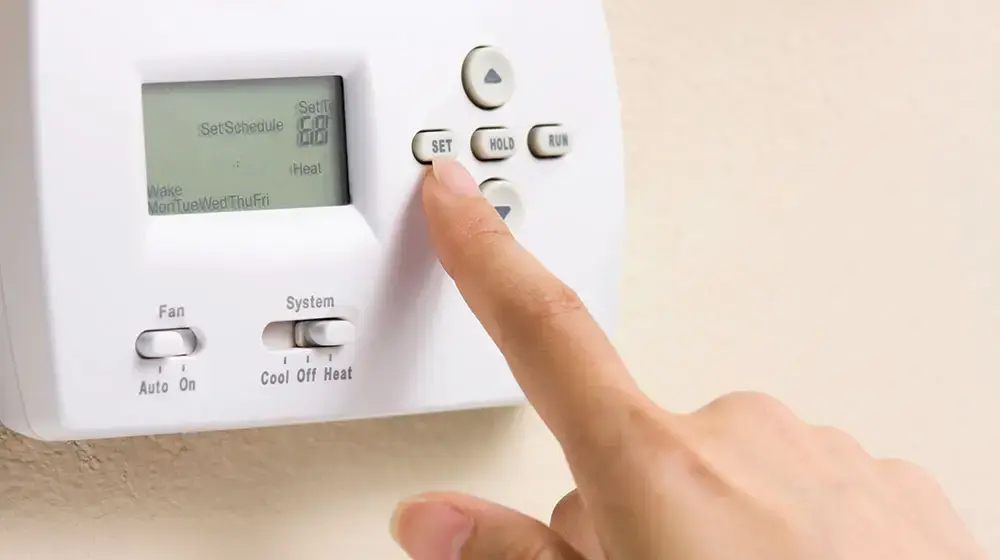
If your thermostat is still following an outdated schedule, you’re probably wasting energy without realizing it. Many households eventually give up adjusting altogether and just keep one temperature all day.
Quindi sì, termostati programmabilicanbe energy saving thermostats — but only if you keep programming them. And let’s be honest, most of us don’t have the patience for that every week.
2. Cosa rende un termostato veramente "intelligente"
I termostati intelligenti vanno oltre i timer e le programmazioni manuali.Imparare,adattare, Eottimizzareautomaticamente.
Ecco cosa significa in pratica:
- Controllo Wi-Fi e app– You can check or adjust the temperature from anywhere using your phone. No need to run downstairs or back home to turn the heat off.
- Modalità di apprendimento– The thermostat recognizes your patterns over time, adjusting heat automatically for your comfort while minimizing waste.
- Geofencing– When you leave home, the temperature drops automatically. When you’re heading back, it warms up again before you arrive.
- Controllo vocale– Funziona con Alexa e Google Home, quindi puoi dire: "Abbassa la temperatura a 20°C".
- Rapporti energetici– Molti termostati intelligenti monitorano l'utilizzo, aiutandoti a vedere esattamente quando e dove viene sprecata energia.
Unlike programmable thermostats that need your input, smart models handle the details for you. You stop guessing — and your system starts saving.
Per i proprietari di case che utilizzano termoconvettori elettrici, prodotti comeTermostato intelligente EcoNet-BHportare le stesse caratteristiche intelligenti nei sistemi di riscaldamento ad alta tensione.
“It’s one of those small upgrades that actually changes how you live,” said another reviewer. “Now I can check every room’s temperature from my phone, even at the cabin.”
Questa comodità si trasforma rapidamente in vera efficienza energetica.
3. Risparmi energetici reali: fatti prima del marketing
Passiamo ai numeri del marketing e parliamo di fatti.
Secondo ilDipartimento dell'Energia degli Stati Uniti, utilizzando correttamente un termostato programmabile si può risparmiare circa5–8%sulle bollette di riscaldamento e raffreddamento. Atermostato intelligente, al confronto, in genere salva10–20%all'anno.
Potrebbe sembrare una cifra irrisoria, ma considerate la spesa media di una famiglia nordamericana$800–$1,200un anno di riscaldamento. Una riduzione del 15% equivale a circaRisparmi da 120 a 180 dollari ogni inverno— abbastanza per pagare l'aggiornamento entro una o due stagioni.
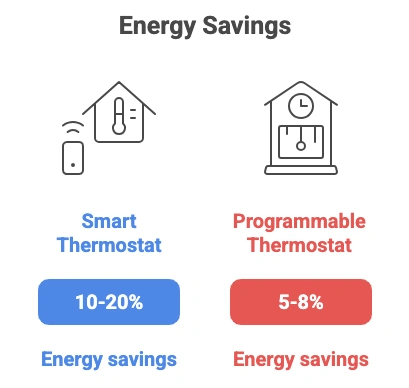
Ecco una rapida ripartizione:
| Caratteristica | Programmabile | Accorto |
|---|---|---|
| Controllare | Orari giornalieri fissi | App, apprendimento, geofencing |
| Rapporti energetici | ❌ Nessuno | ✅ Report dettagliati sull'utilizzo |
| Risparmio (medio) | 5–8% | 10–20% |
| Facilità d'uso | Riprogrammazione manuale | Completamente automatico |
| Convenienza | Di base | Alto |
Those savings come from fewer wasted hours of heat when no one’s home, plus better temperature consistency. You won’t find yourself roasting one room and freezing in another just because the schedule didn’t match your day.
In breve: i termostati intelligenti non solo risparmiano elettricità, ma ancheAttenzioneUna volta installati, lavorano silenziosamente in background per ridurre gli sprechi ogni giorno.
4. Un termostato intelligente è adatto ai termoconvettori?
Ed ecco dove la cosa diventa importante: non tutti i termostati intelligenti sono compatibili con il riscaldamento a battiscopa.
La maggior parte dei modelli più popolari che vedi nei grandi magazzini (come Nest o Ecobee) sono costruiti persistemi di forni a bassa tensione- nonriscaldatori elettrici a tensione di lineaSe si collega il tipo sbagliato, il dispositivo non funzionerà correttamente o potrebbe addirittura essere pericoloso.
Prima di effettuare l'aggiornamento, verifica tre cose:
- voltaggio:I termoconvettori funzionano solitamente con circuiti da 120 V o 240 V.
- Cablaggio:Make sure your existing thermostat has two or four thick wires — that’s a sign it’s line-voltage.
- Compatibilità:Scegli un termostato intelligente per termosifoni progettato specificamente per questo tipo di sistema.
Ecco doveEcoNet-BHcomes in. It’s built for electric baseboard and radiant heating systems common in older and modern North American homes alike.
Si collega tramiteWi-Fi (applicazione Grus), supportaControllo vocale Alexa e Google Homee includesei periodi programmabili al giorno— offrendoti la flessibilità di un termostato programmabile, unita all'intelligenza di uno smart.
“We installed the EcoNet-BH upstairs last winter,” said one customer. “Finally, the rooms stay warm when we’re home and cool when we’re not — and I can see the energy difference right on my phone.”
Questo è il tipo di comodità che puoi percepire e misurare.
5. Perché l'aggiornamento ha senso oltre i numeri
For many homeowners, the real value isn’t just saving on heating bills — it’s comfort and peace of mind.
I termostati intelligenti ti consentono di:
- Controlla la temperatura della tua casa da chilometri di distanza;
- Riscalda la stanza prima di arrivare;
- Tieni d'occhio il consumo di energia in tempo reale;
- Mantenere un comfort costante in più zone.
Sono particolarmente pratici per:
- Case vacanze o affitti– il controllo remoto evita sprechi di energia quando non è occupato;
- Camere da letto al piano superiore o seminterrati– gestire facilmente le zone di calore non uniformi;
- Famiglie impegnate– l’automazione “imposta e dimentica” si adatta a programmi imprevedibili.
With more homeowners moving toward smart energy efficiency, the upgrade isn’t about luxury — it’s about future-proofing your comfort and cutting avoidable waste.
EcoNet-BH — Controllo intelligente pensato per i termoconvettori
Se la tua casa si affida ai termoconvettori,EcoNet-BHè costruito appositamente per te.
- Progettato per sistemi a tensione di linea da 120/240 V
- SupportiControllo dell'app Wi-Fitramite Tuya Smart
- Funziona conAlexa e Google Home
- IncludePianificazione programmabile a 6 periodi
- Hasmodalità di risparmio energetico e manuale
- Richiedenessun hub centralee si installa facilmente
Whether it’s your main residence, a rental unit, or a lakeside cottage, EcoNet-BH gives you the flexibility to stay warm efficiently — without wasting a single watt.
Esplora le specifiche complete e i suggerimenti per l'installazione suEcoNet-BH Termostato intelligente per termosifone.
Conclusione: quando comodità ed efficienza si incontrano
If your programmable thermostat still works, there’s no rush to toss it out. But if you want a system that adjusts automatically, learns your habits, and finally helps youseei tuoi risparmi energetici, passare a un termostato intelligente è una mossa semplice e gratificante.
For baseboard heater homes especially, the difference is night and day — fewer wasted hours, lower bills, and a home that’s always the right temperature when you walk in.
Pronti per una casa più accogliente ed efficiente?
Guarda comeEcoNet-BH Termostato intelligente per termosifoneti aiuta a stare al caldo, a risparmiare di più e a semplificare il comfort questo inverno.
Se desideri vedere come il controllo intelligente della temperatura si inserisce in un sistema per tutta la casa, visita il nostroSoluzione di controllo remoto della temperatura.
FAQ
I termostati intelligenti fanno davvero risparmiare più energia di quelli programmabili?
Yes — studies from the U.S. Department of Energy show smart thermostats can save around 10–20% on heating and cooling costs each year. They automatically adjust temperatures when you’re away, which prevents energy waste most programmable models can’t detect.
Posso usare un termostato intelligente con i termoconvettori elettrici?
Not every smart thermostat works with baseboard systems. Most popular models like Nest or Ecobee are built for low-voltage HVAC systems. For electric baseboards (120V or 240V), look for atermostato intelligente per termosifonerealizzato per la tensione di linea, che si collega direttamente e in modo sicuro.
Vale davvero la pena passare da un termostato programmabile a uno intelligente?
If your goal is lower heating bills and less daily hassle, yes. Smart thermostats save energy automatically, show real-time usage data, and give you remote control through your phone or voice assistant. Most homeowners recover the cost within a winter or two.
